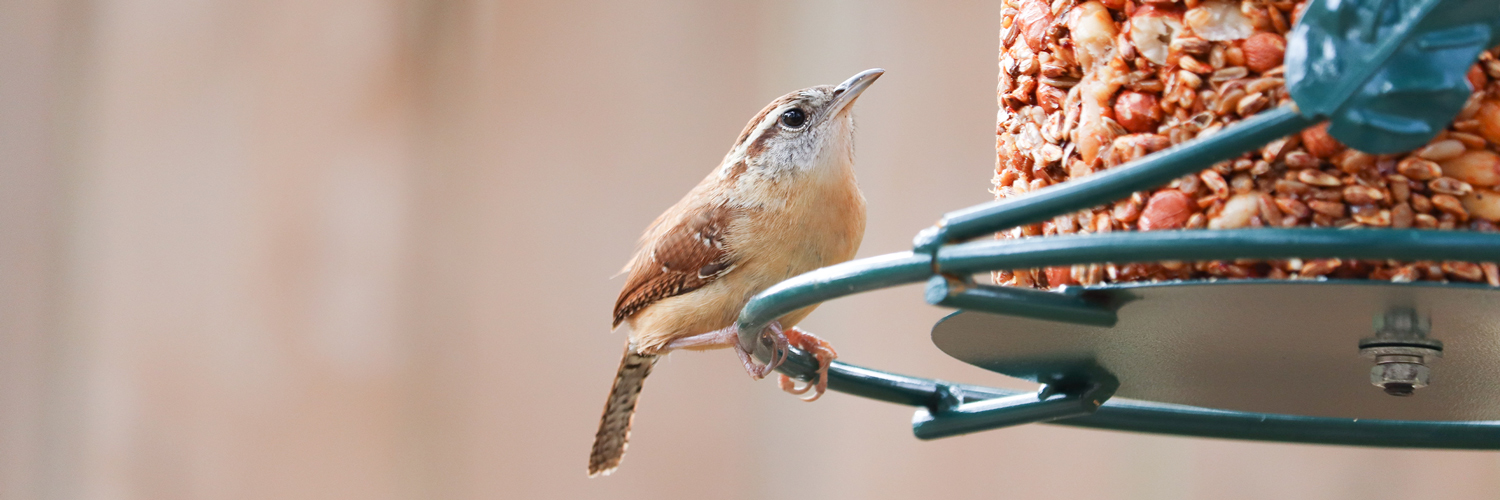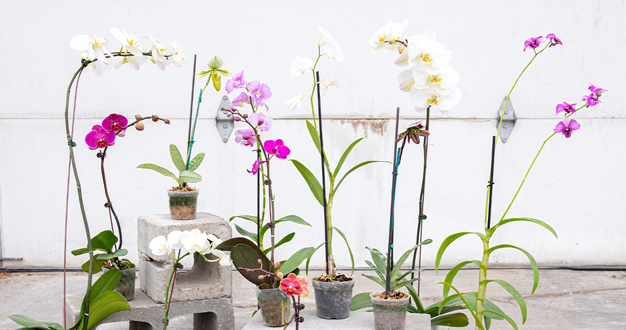
Watching a community of birds in your neighborhood can be one of the easiest and most rewarding ways to participate daily in the natural world. Even one bird feeder filled with a mix of nutritious seeds can bring new and exciting species you never knew were living nearby. Here, we share a few basics of feeding birds – why it’s important, what kind of food attracts your favorite birds, and finding just the right spot to place a feeder in your yard to make this hobby a rewarding one for you and your feathered visitors.

Good for the Birds + for You
Feeding backyard birds benefits the local bird community, especially in the winter. Maybe you’ve created a bird-friendly landscape with lots of native plants that provide critical food for local birds, but as winter progresses, the diminishing supply of seeds and a lack of insects make it difficult for birds to find the sustenance they need. This challenging search for food not only affects adult birds through the winter, it also influences the next generation. Studies show that well-fed winter birds go into the spring mating season with stronger energy stores and are more likely to produce viable eggs and strong, healthy chicks. And with bird populations declining in recent decades, your efforts can help make a much needed difference.
For us, feeding birds brings enjoyment and helps us appreciate and participate in the living world around us. Setting out feeders will bring a surprising number and diversity of birds to your yard. Our own Customer Service team leader Janet Mumme is an avid backyard bird watcher. She lives in Leshara, Nebraska and enjoys attracting and observing all the different species that live in the rural areas surrounding her town. Janet and her husband love seeing the personalities come out in the different birds as they interact with members of their own species as well as other species of birds and animals. A favorite sight in the winter is a dozen pairs of cardinals, scattered along the tree branches in her yard, creating little spots of bright red against the gray sky. Even Janet’s indoor cat enjoys intently watching the birds’ antics from behind the glass patio door.
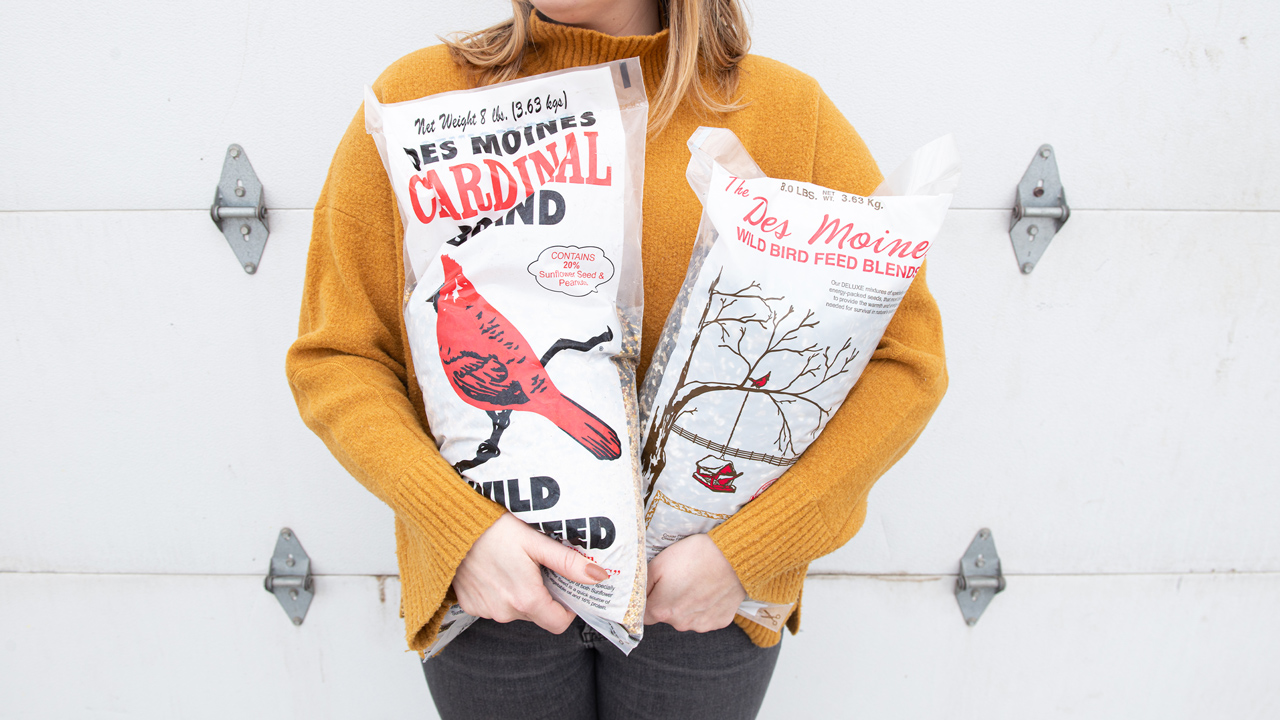
Offer an Enticing Menu
To attract and support the greatest number and largest variety of birds, it’s important to offer a wide selection of food that appeals to all kinds of birds across the community. A great place to start is with a good-quality seed mix that contains several types of seeds and nuts. Our resident backyard bird expert and Greenhouse team leader Bob Ewing suggests looking for a seed mix that contains black oil sunflower seed, safflower, and other high-quality, nutritious selections. In our area, such a smorgasbord will attract everyone from cardinals to chickadees, juncos, nuthatches, woodpeckers, and more species of sparrows than you knew existed. For an extra treat, we have a mix at the store that contains high-energy peanuts, pumpkin seeds, and raisins too.
Suet is another popular choice. Suet is a solidified mix of animal fat, seeds, and nuts that provides high-energy nutrition for birds – an especially valuable resource in the winter when birds spend a lot of energy just to stay warm. Suet is most often hung in a cage-like feeder that allows birds to reach in and pick off pieces to eat. While most birds appreciate suet in their diets, it’s especially useful to attract visitors like woodpeckers, flickers, and nuthatches.
If yellow is your favorite color, you’ll want the bright American goldfinch to visit – and their favorite food is nyger thistle seed. Specially designed feeders keep the tiny seeds from spilling out and often provide multiple perches for whole groups to dine together. In addition to these eye-catching finches, nyger seed is also a favorite snack for purple finches, juncos, and chickadees.
And spotting an elusive, jewel-like hummingbird during the warm summer months is an exciting event for any backyard bird watcher. But rather than seed, these little beauties turn to high-sugar nectar for their boundless need for energy. Hummingbird feeders are designed to offer the nectar in a way that supports how these unique birds feeds on nectar-filled flowers – in a hovering, midflight dance with that tiny tongue flicking in and out. Hummingbirds are attracted to red hues, and often their feeders will be red too – but Bob cautions against selecting nectar that has been dyed that color. Red dye can cause damage to a hummingbird’s kidneys, so clear nectar is a safer choice.
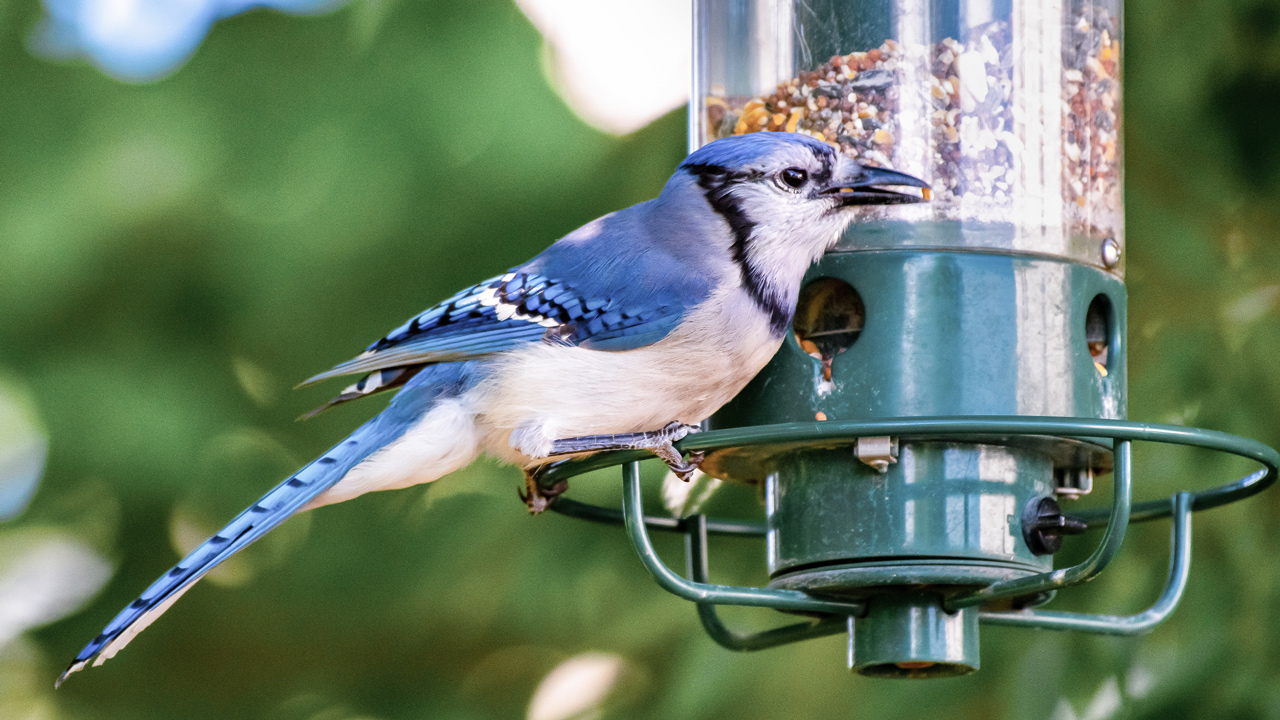
Find the Perfect Spot
Once the right feeder and food are selected, the next thing to consider is placement. The right location can make a big difference. Consider adding a feeder close to your window so you can enjoy a close-up view – less than three feet away is best to avoid having birds crash into the window and hurt themselves when startled from the feeder. Otherwise, try to keep your feeders a safe distance away from any windows, which can reflect wide views of grass, trees, and sky, creating a risk to startled birds. As Janet points out, birds tend to appreciate feeders being placed near places of shelter – such as trees and brush – but not so close that hiding predators may come unexpectedly. Ten to fifteen feet away is great.
If you have an oriole feeder – which are often orange, their favorite color – you’ll want to avoid placing it under too much tree cover. Orioles migrate into our area in the spring – and they’re more likely to spot an orange feeder that’s out from under a tree’s foliage.
And if hummingbirds are what you’re after, feel free to bring their feeder right up onto the patio – even close to seating areas. Once these fearless little birds get used to you, they’ll come surprisingly close while they feed – and may even take a few seconds to inspect you too.
Placing feeders in a variety of locations and heights is another helpful way to attract more birds to your landscape. Try offering food in different styles of feeders as well – tube and hopper feeders are the two most popular. A tray-type feeder placed on the ground is appreciated by ground-feeding species like juncos and sparrows. Multiple feeders increase your enjoyment too. Janet has feeders both outside her patio door and outside her kitchen window where she can observe the birds from wherever she is in the house.
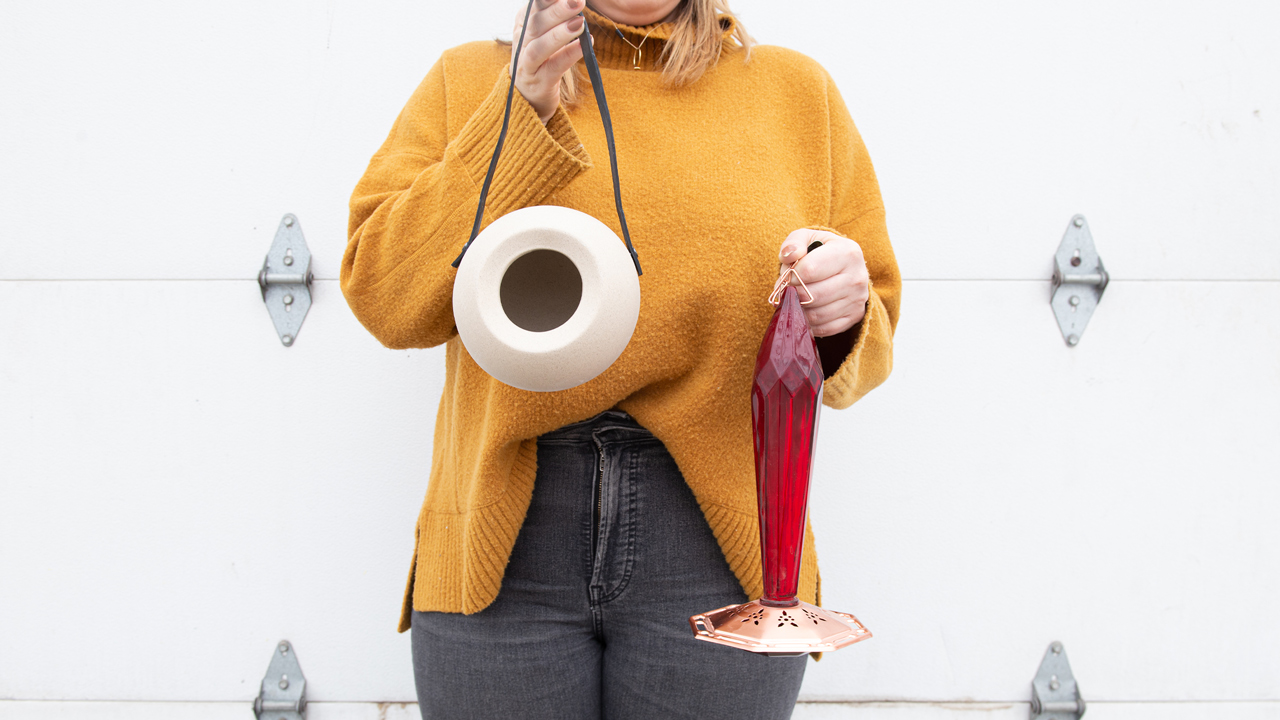
Keep it Fresh + Consistent
Unfortunately, even in the winter, moisture can cause bacteria and mold to grow in a feeder. These contaminants can make birds sick – and they know that. If you notice attendance has dropped off at your feeder, your visitors might be telling you to check that the seed hasn’t gone stale or developed mold. To prevent this from happening, it’s a good idea to clean the feeder every week or two. A feeder with a bottom opening makes this task a lot easier.
But, once your yard becomes known as the go-to place for a nutritious meal, you’ll notice the feeders empty out quite quickly. Stale seed becomes less of a problem, but running out is possible – even daily. To have birds continually coming back, it’s important to keep the feeders full and let your visitors know you’re a reliable food source when they need it. And don’t forget the value of planting native plants too – the original source of bird seed – and a great way to offer more food for local birds.
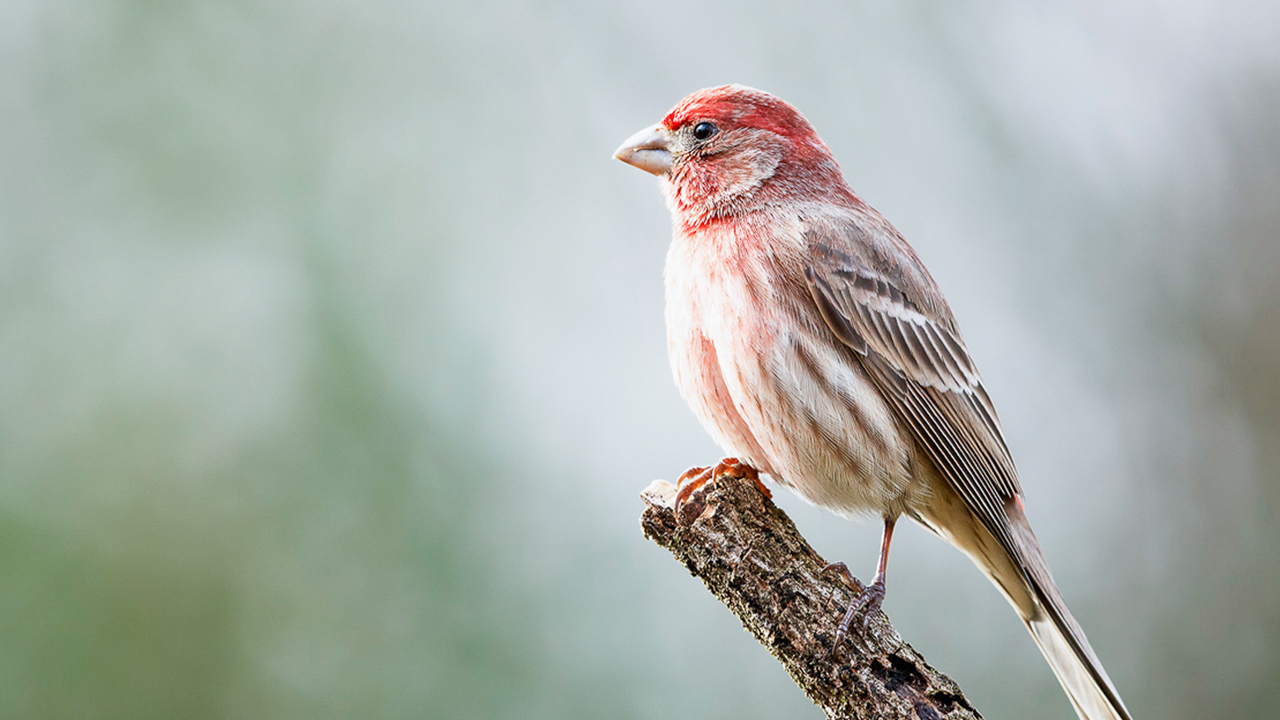
Enjoy the Local Bird Community
Feeding birds is a great way to support the local ecosystem right in your own neighborhood and to participate in the natural world around you. When you offer the food they need, it’s amazing how many will answer the invitation – to their benefit and yours too. If you have any questions or would like to talk more about creating a bird-friendly landscape, just stop by and talk with our team.

